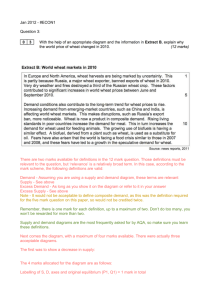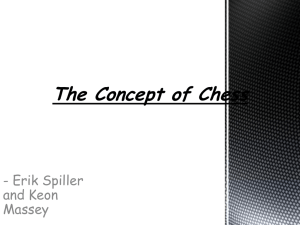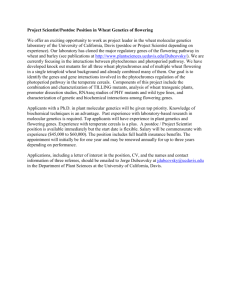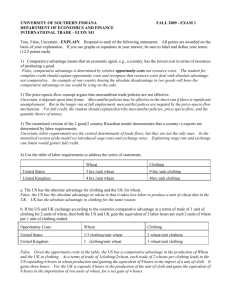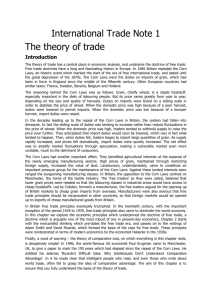International Trade Theory Exercise 1 Mercantilists and Absolute
advertisement
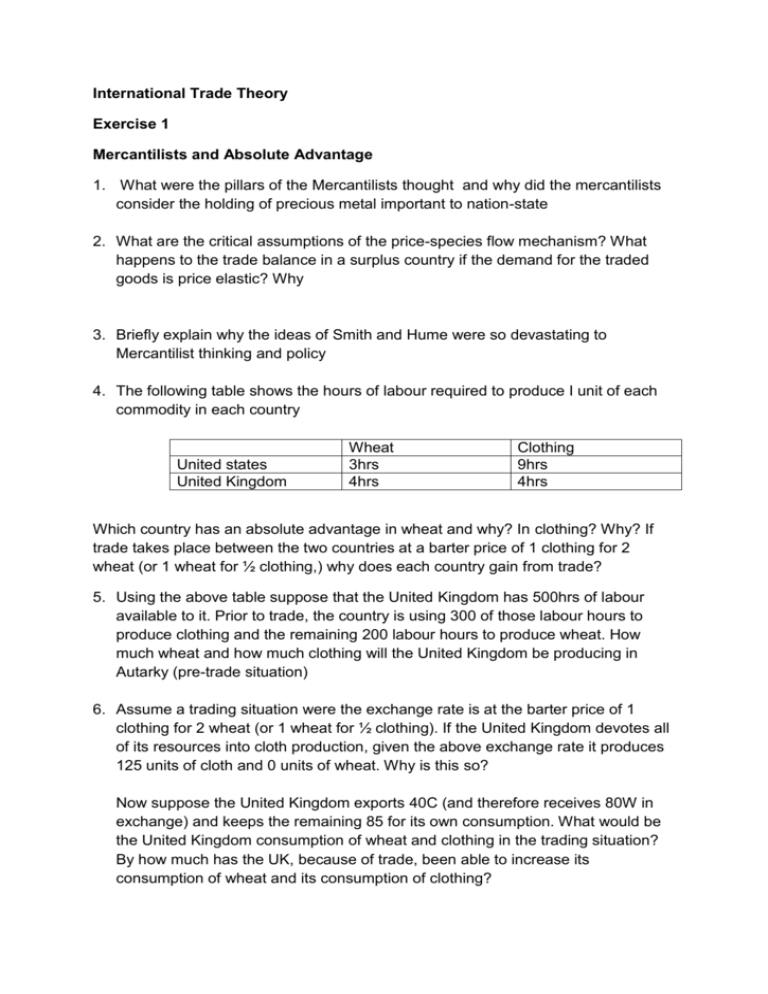
International Trade Theory Exercise 1 Mercantilists and Absolute Advantage 1. What were the pillars of the Mercantilists thought and why did the mercantilists consider the holding of precious metal important to nation-state 2. What are the critical assumptions of the price-species flow mechanism? What happens to the trade balance in a surplus country if the demand for the traded goods is price elastic? Why 3. Briefly explain why the ideas of Smith and Hume were so devastating to Mercantilist thinking and policy 4. The following table shows the hours of labour required to produce I unit of each commodity in each country United states United Kingdom Wheat 3hrs 4hrs Clothing 9hrs 4hrs Which country has an absolute advantage in wheat and why? In clothing? Why? If trade takes place between the two countries at a barter price of 1 clothing for 2 wheat (or 1 wheat for ½ clothing,) why does each country gain from trade? 5. Using the above table suppose that the United Kingdom has 500hrs of labour available to it. Prior to trade, the country is using 300 of those labour hours to produce clothing and the remaining 200 labour hours to produce wheat. How much wheat and how much clothing will the United Kingdom be producing in Autarky (pre-trade situation) 6. Assume a trading situation were the exchange rate is at the barter price of 1 clothing for 2 wheat (or 1 wheat for ½ clothing). If the United Kingdom devotes all of its resources into cloth production, given the above exchange rate it produces 125 units of cloth and 0 units of wheat. Why is this so? Now suppose the United Kingdom exports 40C (and therefore receives 80W in exchange) and keeps the remaining 85 for its own consumption. What would be the United Kingdom consumption of wheat and clothing in the trading situation? By how much has the UK, because of trade, been able to increase its consumption of wheat and its consumption of clothing? Comparative Advantage 7. Given the following table: France Germany Computers 100days 60days wheat 4days 3days a. Calculate the autarky price ratios for both Computers and Wheat. b. Which country has a comparative advantage in computers? Explain why? Which has a comparative advantage in wheat? Explain why? c. If the terms of trade is 1 computer : 22 wheat, how many days of labour does France save per unit of its imported good by engaging in trade? How many days does Germany save per unit of it’s import good? 8. In light of the Ricardian model, how might you evaluate the claim by developing countries that they are at a disadvantage in trade with powerful industrialized countries? 9. Using the following table please answer the following questions Bread VCRs Lamps Rugs Books United Kingdom 2 days 8 days 4 days 3 days 2 days United States 2 days 6 days 2 days 2 days 3 days a. Assume the wage rate in the United Kingdom ( Wuk ) is £8 per day, the wage rate in the United States ( Wus ) is $20 per day, and the exchange rate (e) is $2/£1. With this information, determine the goods that will be U.K. exports and the goods that will be U.S. imports b. Using the above example as in (a), calculate the upper and lower limits (in pounds per day) to the UK wage rate that are consistent with a two-way trade between the countries. c. Using the information as in (a) calculate the upper and lower limits (in $/£) to the exchange that are consistent with two-way trade between the countries. 10. a. What happens to the pattern of trade if the level of wages in one country increases, other things being equal? b. Similarly what happens to the patterns of trade of the domestic country if the price of foreign currency rises (i.e., it’s currency depreciates in value) 11. Monetizing the Ricardian model by the introduction of wages, is there a paradox in the Ricardian model similar to that of the mercantilist model. If yes please explain. If no, why not.


